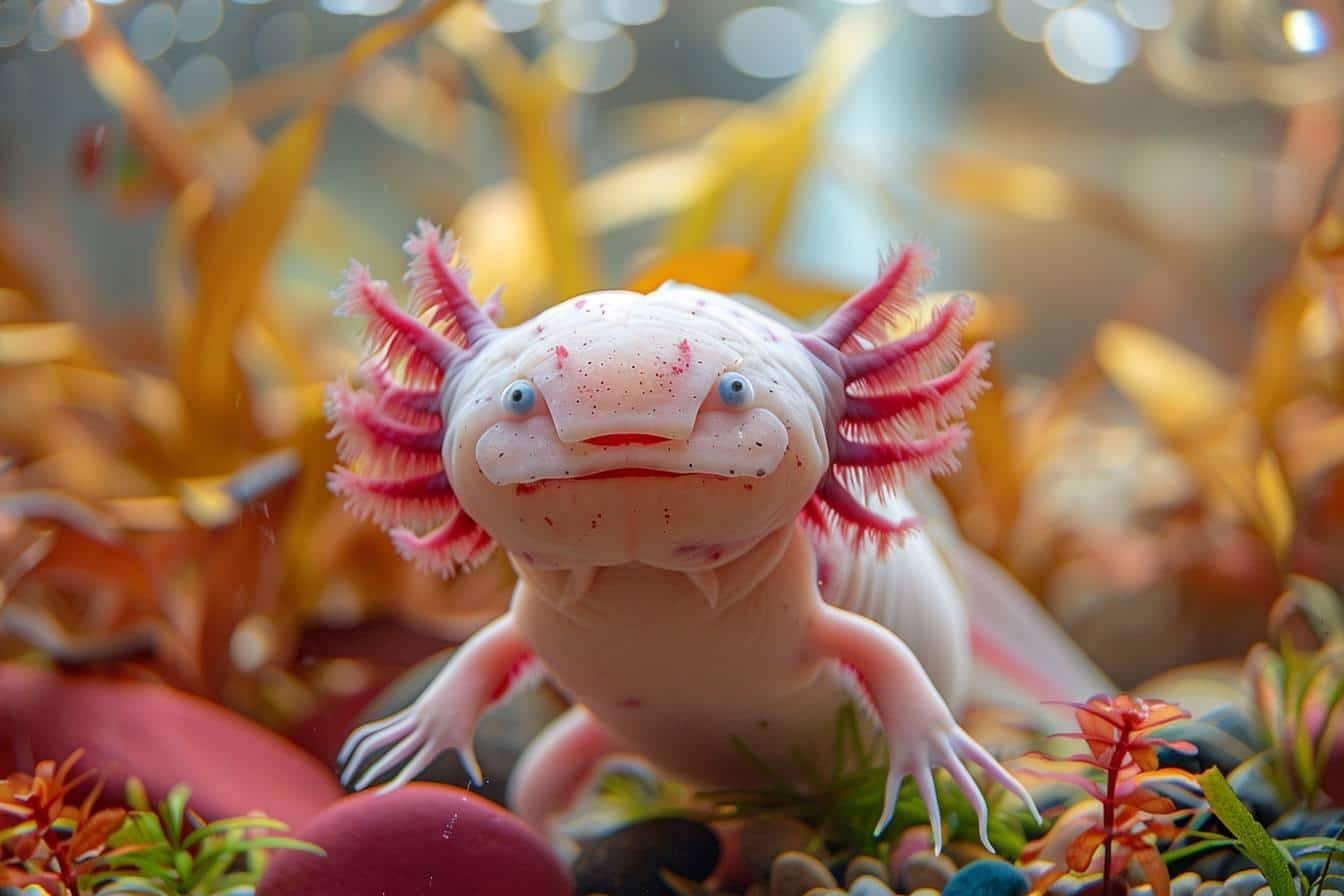Hello everyone, animal lovers and aquarium enthusiasts! Today we're going to be talking about Axolotls and in particular the recommended aquarium size for these charming creatures. As a pet shop floor manager, I often have the opportunity to advise customers on the best conditions for housing and maintaining these fascinating aquatic salamanders. So get ready, we're diving straight into the world of Axolotls!
What size aquarium should I choose for an axolotl?
Let's start with the crucial question: what size aquarium Is it necessary for an Axolotl? You may be surprised by this answer. The minimum recommended size for a single adult Axolotl is 55 to 60 litres. However, to guarantee their well-being, it's highly advisable to opt for a 100-litre aquarium. But why so much space?
Axolotls, although not agile swimmers, need space to move freely and avoid stress. Their natural habitat is the bottom of lakes, so they prefer wide rather than deep tanks. A 100x40x50 cm aquarium with a volume of 200 litres would be ideal for two individuals. This type of configuration offers plenty of space for them to live together without difficulty.
For three Axolotls, an aquarium one metre long is needed, and for four individuals, a length of 1.2 metres is required. Here is a small table summarising these recommendations:
| Number of Axolotls | Minimum volume (litres) | Recommended dimensions (cm) |
|---|---|---|
| 1 | 55-60 | 80x30x40cm |
| 2 | 100 | 100x40x50cm |
| 3 | 150 | 100x50x50cm |
| 4 | 200 | 120x50x50cm |
And then, let's be honest, a spacious aquarium with these graceful little creatures is still a soothing and beautiful sight to behold. I know a thing or two about this: I splurged on a bigger tank thinking that one Axolotl was enough, but they're so cute that I quickly decided to take in two more!
What equipment is needed for an axolotl aquarium?
Let's move on to the essential equipment for your Axolotl's aquarium. You may be wondering what are the must-have pieces of equipment to keep your pets comfortable? Here's a list of the essentials:
- Slow-flow filter Axolotls are very sensitive to strong currents. So choose a filter with a low flow rate to avoid stressing them.
- Thermometer : The water temperature should be maintained between 16 and 18°C.. If the water exceeds 22°C, you need to use a chiller or an aquarium cooler.
- Hideouts Axolotls love to hide. PVC pipes, hollow decorations and natural plants such as water milfoil, elodea and cobomba provide suitable hiding places.
- Lid Despite their clumsy appearance, Axolotls can jump. A protective cover is therefore essential to prevent them from jumping out of the aquarium.
Never neglect water quality. Hard water with a pH of 7.5 is ideal. Make sure that oxygenation and filtration are optimal. Finally, avoid overly bright lighting. These creatures prefer dark environments.
Here's a funny anecdote: a customer came to see me in a panic because his Axolotl looked like it had been damaged. depress. After a few questions, it turned out that he had simply forgotten to put hiding places in the aquarium.

Water: what temperature and parameters are right for the axolotl?
Now let's look at the water parameters specific to Axolotls. You're probably wondering: what is the ideal temperature ? Well, as mentioned above, the water temperature should be between 16 and 18°C. Temperatures above 22°C can be harmful and potentially fatal for these fragile creatures.
Want all the details on water parameters to keep your axolotls healthy? Here are a few key points:
- Ideal pH: 7.5 - A slightly alkaline pH is perfect.
- Water hardness: Prefer hard water, with high KH and GH.
- Nitrogen cycle: Before introducing an Axolotl into a new aquarium, leave the aquarium running empty for about three weeks to complete the nitrogen cycle.
Water filtration and oxygenation play a crucial role in the survival of Axolotls. And don't forget regular water changes. A little tip: change between 5% of water every week and 15% every fortnight to maintain excellent water quality.
A loyal customer wanted test your skills as an aquarist and try your hand at an ultra-complex habitat. He returned two weeks later, acknowledging that simplicity is often the key to success with Axolotls. Back to basics: a good filter, good oxygenation and hiding places.
What do axolotls eat?
Let's move on to the diet of our gilled friends. Axolotls have a mainly carnivorous diet. They like to eat meat. Here are some examples of foods you can offer your axolotls:
- Trout
- Salmon
- Prawns
Young Axolotls can also enjoy small insects or worms, but their diet becomes more varied as they grow. Make sure you offer a variety of food to ensure a balanced diet. On my morning rounds, I love to watch Axolotls stalking their food: these creatures may not be sprinters, but they know how to capture their prey!
Aquarium accessories for your axolotl
Finally, a few words about the essential accessories for keeping your Axolotls comfortable. Aquarium decoration is not just aesthetic, it also plays an essential role in the animals' well-being:
- Natural plants They provide areas of refuge and contribute to oxygenation.
- Substrate : Fine sand is preferable gravel or small stones, to avoid any risk of ingestion.
- Various hiding places Use PVC tubes, hollow aquarium decorations or upturned pots to provide a haven of peace for your Axolotls.
One day, during an animation in a pet shop, a child burst out laughing when he saw an Axolotl hiding in a small ceramic castle. It's a visual treat to look after the decor while providing essential hiding places for the serenity of these aquatic animals.
Here, dear friends, are some tips for the size of the aquarium and the care of your Axolotl. By following these recommendations, you can provide these fascinating creatures with an environment in which they can flourish. Take care of your aquariums, and above all, don't forget to keep an eye on your AxolotlsThey have so much to teach us about the aquatic world!
